Casa Rufo by Alberto Campo Baeza
Delicate glazing fits around a bulky concrete structure at this hilltop house in Toledo by Spanish architect Alberto Campo Baeza (+ slideshow).
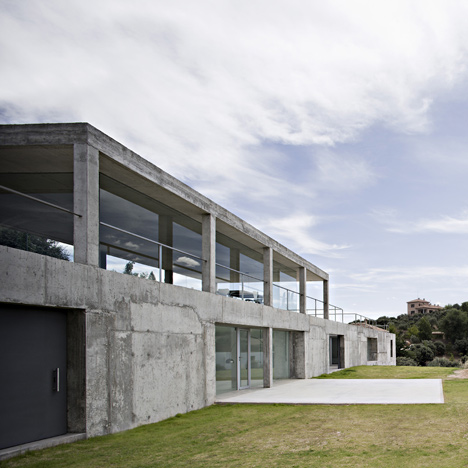
With views stretching out towards the Sierra de Gredos mountains, the two-storey Casa Rufo was designed by Alberto Campo Baeza as "a hut on top of the cave", with a sequence of ground-floor rooms overshadowed by a long and narrow rooftop podium.
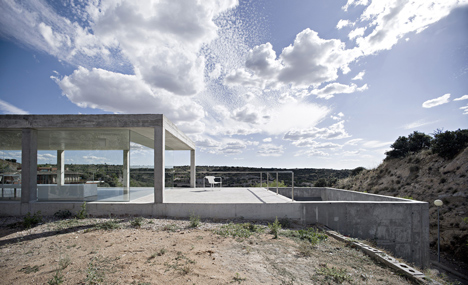
A concrete canopy, described by the architect as like "a table with ten legs", shelters a small section of the podium and is surrounded by frameless glazing, creating a transparent room that is visible from the surrounding garden.
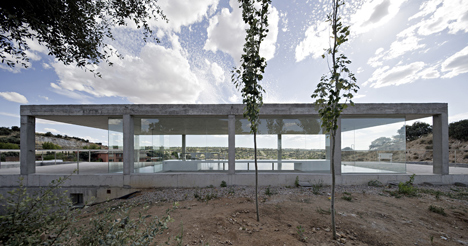
A staircase leads directly down from here to the living and dining room below, where the architect has placed the entrance to the house.
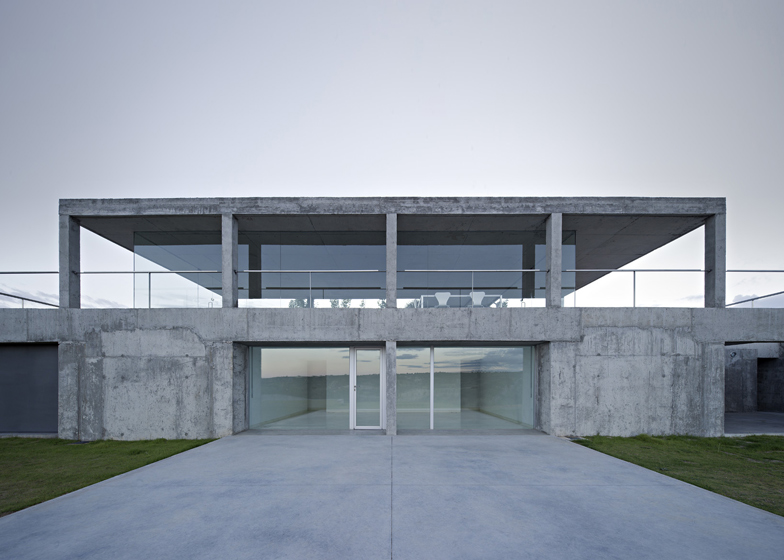
Rectangular cutaways transform some of the rooms into open-air courtyards. Two bedrooms face in towards these spaces, rather than out through the exterior walls.
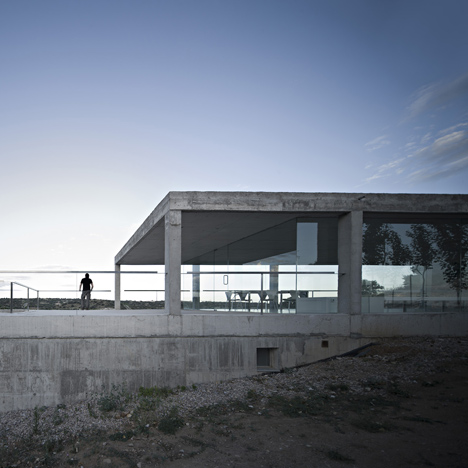
Another opening reveals the location of a parking garage, while a smaller void functions as a rooftop swimming pool.
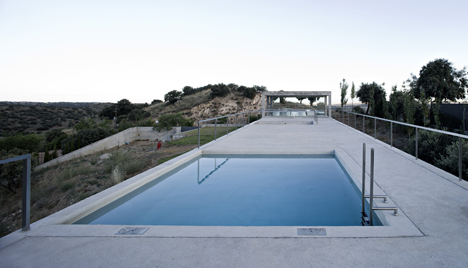
A row of poplar trees was planted behind the house, helping to screen it from views from the north-east.
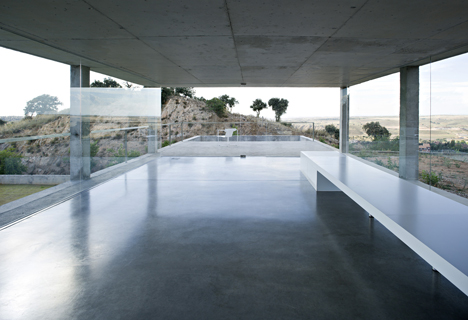
Alberto Campo Baeza lives and works in Madrid, and also teaches architecture at the Madrid School of Architecture. His other projects include Offices for Junta de Castilla y León, a glazed office block concealed behind a sandstone enclosure.
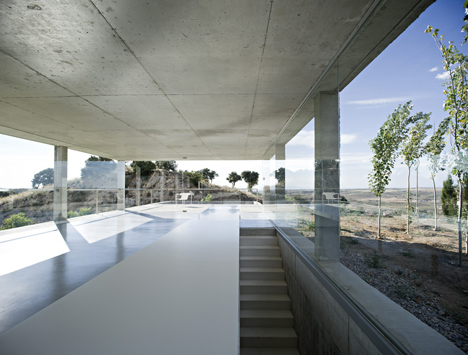
Other Spanish houses on Dezeen include a converted stone stable and a residence that looks like a cluster of concrete cubes. See more houses in Spain »
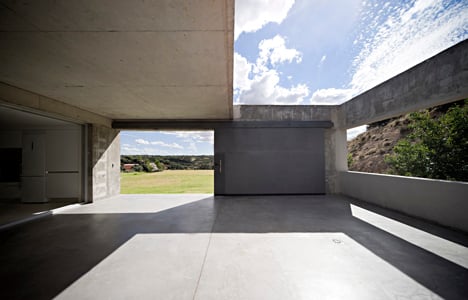
Photography is by Javier Callejas.
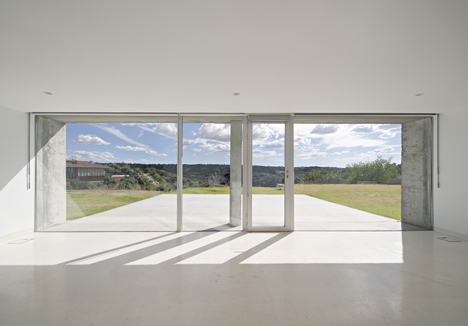
Here's a project description from the architect:
Rufo House, Toledo
The brief was to build a house on a hilltop outside of the city of Toledo. The hill faces southwest and offers interesting views of the distant horizon, reaching the Gredos Mountains to the northeast.
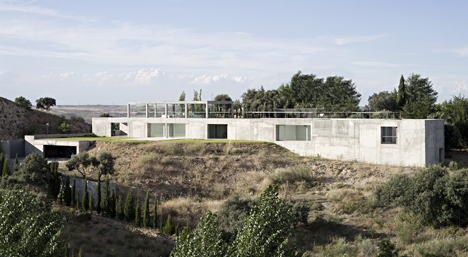
The site measures 60 x 40 m and has a 10-metre slope. At the highest point, we established a longitudinal podium, 6 meters wide and 3 meters high, that extends from side to side the entire length of the site. All of the house's functions are developed inside of this long box, the length of concrete creating a long horizontal platform up high, as if it were a jetty that underlines the landscape with tremendous force.
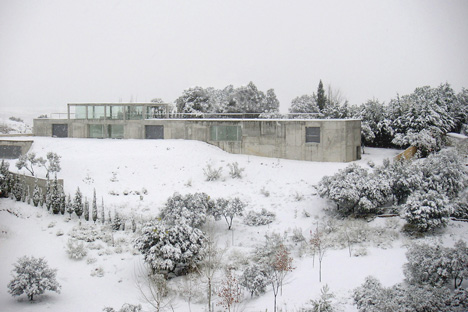
This long concrete box is perforated and cut into, conveniently creating objects and voids to appropriately accommodate the requested functions (courtyard + covered courtyard, kitchen, living room-dining room-hall, bedroom, courtyard + courtyard, bedroom, garage, swimming pool, bedroom, courtyard).
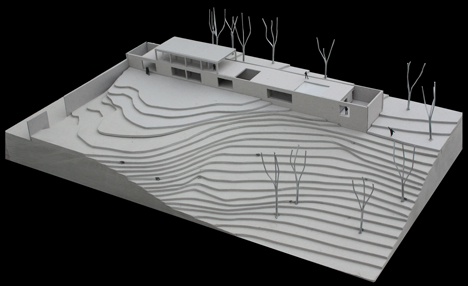
In this distribution the living-dining room opens to the garden while the bedrooms face onto courtyards open to the sky and garden, affording them the necessary privacy. The stairway connecting the upper floor is situated in the area behind the living-dining room.
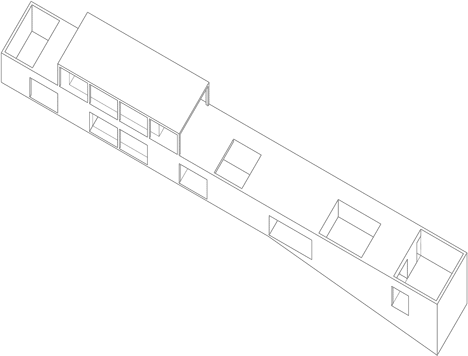
On top of the podium and aligned with it, a canopy with ten concrete columns with a square section support a simple flat roof, as if it were a table with ten legs. Under this roof, behind the columns, is a delicate glass box. To protect the views of the house from the back, a simple row of poplars were planted.

Once again, the theme of the hut on top of the cave. Once again, the theme of a tectonic architecture over a stereotomic architecture.

Location: Urbanización Montesión, Calle Brezo parcela nº 158. Toledo
Client: Rufino Delgado Mateos
Area: house: 200 sqm, patios 120 sqm
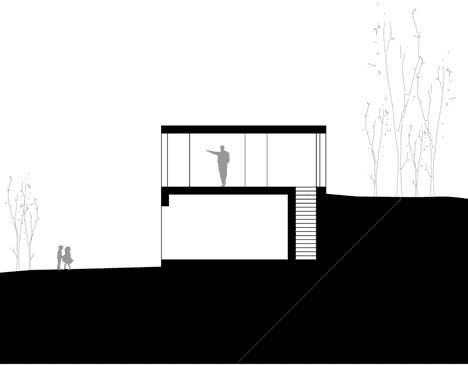
Architect: Alberto Campo Baeza
Collaborating architects: Raúl Martinez, Petter Palander
Structure: Juan Antonio Domínguez (HCA)
Surveyor: José Miguel Agulló
Builder: José Miguel Agulló